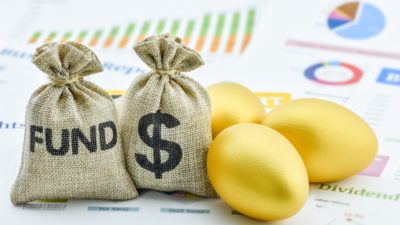The chorus of banks and economists predicting a 2020 recession in Canada is growing louder.
Last week, RBC, CIBC, Bank of America and Oxford Economics chimed in, predicting that the Canadian economy would contract in 2020. Oxford had the most bearish outlook, saying that the economy was likely already contracting, while CIBC predicted a 3% decline for the next two quarters.
If these forecasts are accurate, then Canadians will have a rough year a head of them. Hit with the one-two punch of coronavirus and collapsing oil, many portfolios are already on life support. In this environment, it’s vital that you prepare, so you make it through the downturn in good shape. Here’s how to do that.
Step one: Speak to a financial advisor
The first step to preparing your portfolio for a 2020 recession is to speak to a financial advisor. Every investor’s situation is different, and there’s no “one-size-fits-all” advice that’s right for everyone.
A younger investor with a long time horizon ahead of them may be willing to take risks and wait for the payoff, while an older investor may prefer steady income.
A financial advisor can help you build a portfolio that’s right for you. A word to the wise: it’s best to work with a “fee-only” financial advisor rather than one who works on commission. Advisors working on a commission have an incentive to sell you funds — sometimes with very high fees — that may not be right for you.
Step two: Re-visit your target asset allocation
Once you’ve spoken to your financial advisor, your next step is to build a target asset allocation that fits your risk profile. Most likely, you’ll want some bond funds in the mix, since short-term bonds are among the safest assets during recessions.
You may also want to consider utility stocks like Fortis (TSX:FTS)(NYSE:FTS). Utilities have a long track record of weathering economic storms unscathed. Thanks to their ultra-stable revenue streams, they’re able to pay consistent dividends, even when stocks are falling.
Fortis in particular is a veritable paragon of financial stability, with an uninterrupted 46-year track record of raising its dividend. In 2008 and 2009, it grew its earnings, when the Great Recession was driving declines at most companies. Utilities enjoy this stability because of their indispensable service, and the industry’s high barriers to entry. In the event of a 2020 recession, they should be among the safest stocks around.
Step three: Monitor your results and re-balance
After you’ve set your portfolio’s target allocation, you’ll need to periodically monitor your results and re-balance if needed. If you’re going mostly in stocks, you should prepare to wait a while before they start rising. A few flat or losing quarters is par for the course.
However, if your stocks start slashing dividends, that may be a bad sign. In general, you should expect to see your investments gradually stabilizing before starting to rise. If that doesn’t start to happen after a few years, you may need to re-visit your asset allocation.









